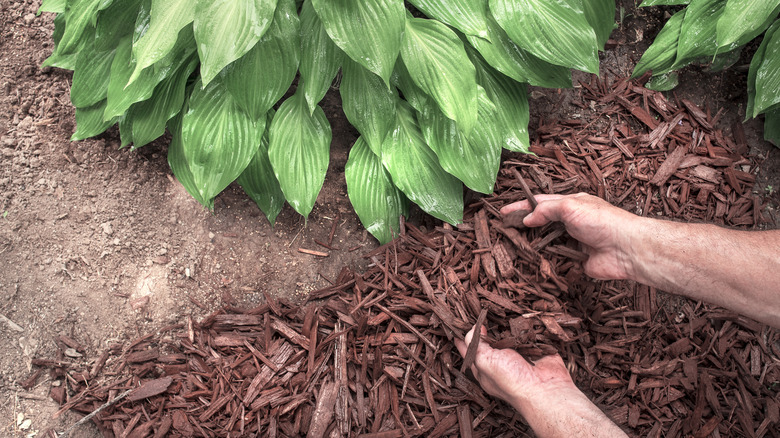A Polar Vortex Is Coming Soon: Here's What You Need To Know To Protect Your Garden
We are sliding closer toward winter, and many gardens are about to face their toughest challenge yet: surviving a polar vortex. And this ain't your typical heavy snowstorm or cold snap; for your garden it means an invasion of extremely cold air and wickedly strong, drying winds. If you are a homeowner who takes pride in your garden, you'll need to take some immediate steps to protect your plants and avoid irreparable damage. Because while your hardiest shrubs might shrug off the cold, young trees, container plants, and vulnerable ornamentals are at risk.
A polar vortex is defined by a deep dip in the jet stream allowing the intense cold air normally confined to the Arctic to sweep far south. For your garden, this means two main deadly factors are at work. First is the freezing of plant tissue. When temperatures dip this fast, ice crystals form inside plant cells literally rupturing the cell walls. Upon thawing, the destroyed tissue dies. The second threat is drying out, or dessication, aka winter burn. The high winds from the vortex strip moisture from the leaves of evergreen trees and shrubs while the frozen ground stops their roots from drawing replacement water up.
The plants at the highest risk need your attention first. These include container plants, whose roots are exposed to ambient air temperature. Next, plants that are at the limit of their USDA hardiness zone; they'd likely survive regular winter conditions, but this dip will push them past where they can survive. Finally, evergreens, new plantings, and any fruit buds that have set early. Here's how to take care of them.
How to do last-minute ground and root preparations
Before you even think about covering foliage, switch your focus to roots and surrounding soil; they're the lifeblood of your landscape. The easiest and most impactful step you can take is deep hydration ... if the temperature is above 40 degrees Fahrenheit. If it is, water your shrubs and other vulnerable beds thoroughly. Moist soil holds and radiates heat way more than dry soil does, so this creates a helpful layer of insulation and extra water for the roots. If your ground is already frozen (or if the temperatures are already below freezing, skip this step). Here's how to protect your pants from frost, too.
Right after you hydrate your plants, apply a fresh and thick layer of insulation, around six inches of organic mulch. Materials like straw, wood chips, or shredded leaves work fine too. Put the mulch over the root zone of any vulnerable perennials and shrubs, but keep it a few inches away from the crown or trunk to prevent root rot. This deep layer is a buffer for your roots for low temps and also prevents frost heaving. Heaving occurs when repeated nightly freezes and daily thaws of the soil pushes plants around, often out of the ground so their roots are exposed. Lastly for this part of the process, get your container plants moved to an unheated garage, shed, or sheltered porch. Grouping them together can help them share any available warmth. If they have to stay outside for some reason, wrap the pots themselves in burlap or bubble wrap to help keep the roots warm.
How to create above-ground insulation and barriers
Now, move on to protecting exposed stems, branches, and foliage. For tender shrubs and perennials, create an insulated tent or shroud using breathable materials like burlap or even old sheets and blankets. The key here is that the covering has to reach all the way to the ground to trap the heat radiating from the soil; use something heavy like rocks or bricks to secure it. However, never use plastic directly against the plant tissue; it can transfer extreme cold and damage the tissue. Use stakes, tomato cages, or metal hoops for a support structure that keeps the insulating material off it, like a hoop house.
For evergreens and shrubs exposed to these nasty winds, set up a physical barrier. Build a screen of snow fencing or stakes wrapped in burlap on the side facing the oncoming wind to interrupt it and greatly reduce windburn. This, importantly, prevents something called sunscald, defined as the splitting of the bark that happens when a cold sunny day warms the bark quickly only for it to freeze and contract again at night. Finally, once the vortex passes, resist the urge to immediately prune any brown or brittle foliage; wait until spring to properly assess the damage since the roots usually survive and can push out new growth. By taking these careful and helpful steps now, you give your most vulnerable plants a better chance at surviving the polar vortex and bouncing back once spring arrives.


